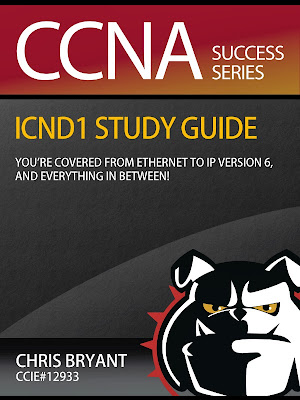Here's your all-new CCNA and CCNP Training Post for Monday, Nov. 18!
Before we start -- thanks for making my CCNA And CCENT ICND 1 Study Guide the #1 Kindle Best Seller in the Technology / Protocols section!
Don't have yours yet? Grab it today!
(And many thanks for the+1s in Google!)
Before we start -- thanks for making my CCNA And CCENT ICND 1 Study Guide the #1 Kindle Best Seller in the Technology / Protocols section!
Don't have yours yet? Grab it today!
(And many thanks for the
Today's CCNA / CCENT Practice Exam Topic: "Intro To Networking"
Let's get to it!
1. Which OSI layer ensures the remote communications partner is available?
2. Which of the following accurately describes the FCS?
A. Runs at Layer 3 of the OSI model
B. Operates at the Data Link layer of the OSI model
C. The recipient of the frame detects the error
D. The sender of the frame detects the error, which in turn saves valuable bandwidth.
3. Which of the following best describes the capabilities of the Frame Check Sequence?
A. It performs error recovery but not detection.
B. The FCS can perform both error detection and recovery.
C. The FCS can detect an error, but it's not responsible for recovery.
D. The FCS can perform neither error detection nor recovery.
We'll get to the answers right after this incredibly brief message!
Join over 6700 happy Bulldogs in my CCNA Video Boot Camp!
You receive over 27 hours of downloadable, info-packed CCENT and CCNA instruction from yours truly for just $44!
Now let's get to those answers....
1. Making sure the remote partner is available is the job of the Application layer.
2. B, C. The Frame Check Sequence runs at the Data Link layer, and it's the recipient of the frame that actually performs the error detection.
3. "C". The previous question gave you a hint! The FCS can aid in error detection, but it doesn't perform error recovery.
Be sure to scroll down in the blog for more practice exams, and I'll see you Monday night with a very important CCNA 200-120 video!
See you then!
Chris B.


Comments